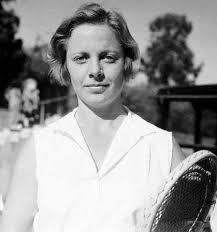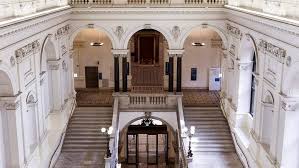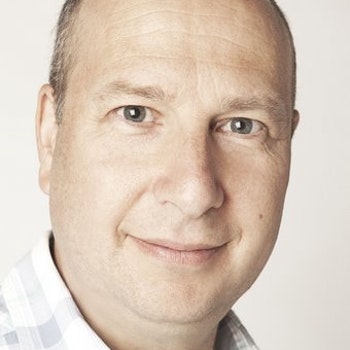Good Read meta-data is 520 pages, rated 3.77 by twenty-six litizens.
Genre: Biography.
Verdict: Indomitable!
“Cinema lies, sport does not,” Jean-Luc Godard, an avid sports fan.
Alice who? Among Alice Marble’s (1913-1990) lesser claims to fame is that she was the inspiration for the DC Comics character Wonder Woman!* That accolade arose from her athletic career. (See title above.)
Born to a working class family in San Francisco, Marble’s father was a mechanic on the street cars, and her mother managed the brood of children. In time Alice would give tennis lessons to King Edward VIII of England, and play private exhibition matches at San Simeon with the Hollywood A-List. Get it!
But it all started with a Louisville Slugger. (The cognoscenti will get it.) As a tweenager she idolised her older brother and followed him in playing baseball, where it quickly became apparent that she could run faster, throw harder, field better, and out hit him. It was embarrassing for him in sandlot games to be chosen after his kid sister, and it was worse when she won a ballboy tryout for the San Francisco Seals. (Again with the cognoscenti.) So this brother bought her a second-hand tennis racket from a pawn shop and more or less locked her into the fenced public concrete tennis courts in the neighbourhood while he went off to play baseball.
On these courts she took on all comers, boys, girls, Jews, Chinese, blacks, and anyone else who showed up with a racket, and she won in a serve and volley game. Pow! Going out to play like this, she wore shorts and t-shirt. In this girl one sees the woman to come and not just in the attire but also in the can-do attitude.
One observer of her powers on these courts staked her entry into local competitions (and bet on her to win). She did and he did. This led to other sponsors and other wins. Her game was completely untutored but it was dynamic and powerful enough to get local press mentions, and that led to more sponsors.
At one point, her penurious family bought her a membership in an elite tennis club, thinking she would learn things there about both tennis and life and attract more and better (i.e., not gamblers) sponsors. At this country club, she was a fish out of water the only time she went for a competition. Her clothes were not suitable; she didn’t know what to say or how to say it. The only people she knew there were the bus boys who also played tennis on the public courts. Then in the club competition draw her snobbish opponent protested at playing this pathetic nobody in shorts and a t-shirt! Rattled and embarrassed, after a re-draw Marble lost in a double humiliation.
Enter Eleanor Tennant, whose fame as a tennis coach was national, likewise of working class origins, but now tennis teacher to Carol Lombard, Marion Davies, Errol Flynn, and others. She saw in the teenage Marble the stone from which to carve a champion, and she set to work with the wit, insight, tenacity, patience, and loyalty that marked her coaching career. She passed many of these qualities onto to her protégée.
Both of Marble’s parents died young while she was still in her teens, leaving the elder brother as head of the family. All the children left school and worked. From fourteen Alice worked in a Wilson Sporting Goods store in the back, shelving and stacking. The manager later gave her a brand new racket, and she hence remained brand loyal. (The purchaser of this racket left it for pick-up and never returned.)
It is a story of ups and downs, triumphs and failures. Because of her social background Marble was often denigrated by tennis officials and her naiveté meant she was sometimes manipulated, too, because Eleanor could not be there every minute. Marble’s wins on the court were spectacular and so were her losses. With Marble there was fireworks. It was all so different from the demure and muted world of ladies’ tennis at the time.
When she was ranked in the top ten in the USA she contracted tuberculous and collapsed on the centre court of the French Open. That seemed to end her career, if not her life. But two long years later she was back, hitting the ball harder than ever. Eleanor paid all the medical bills with the money she earned from her precarious existence as coach to the fickle glitterati. Who knew when the novelty of tennis would give way to another Hollywood whim and leave her high and dry.

By the way, the US Tennis Association that sponsored her trip to the French Open, spent years trying to sue her for failing to complete her contract to the point sending a bill collector from New York to California to extract the money while she was hospitalised in a sanitarium. Eleanor as always settled that. But it is pretty clear that had Marble been one of the tennis club snobs this treatment would not have occurred.
Part of Marble’s recovery was to take operatic singing lessons for breadth control and she discovered that she could sing and that she liked to sing. Another part was a contrived competition for Eleanor’s favour with her other protégé Bob Riggs. Yes, him.
Marble was prone to dehydration in the long matches played in the sun, and a response to that, again from Eleanor, was to put soaked cabbage leaves under her visor. These fell out at one particularly embarrassing moment. Read the book to see when.
Remember that snob who called her a nobody. A year or two later by chance they were again paired in a local competition, and Marble literally drove this snob off the court with a record number of aces and a smash that broke her nose.
With Eleanor’s instruction Marble broadened her repertoire with top spin, slices, undercuts, lobs, drop shots, back spin, cross-cuts, and tactical court management, i.e., using all the court for her shots. She also slowly adjusted to the surfaces of clay and grass which had none of the bounce of playground concrete. She also learned, as was much remarked in her mature years, to play with an effortless economy of motion while still hitting blazing shots.
She played an aggressive, masculine style and wore shorts as she had as a girl. This at a time when women wore lady-like long skirts and patrolled baselines. Not Marble who went to the net for the kill time and again. These attributes made her news copy and she quickly became famous beyond her accomplishments. She seems to have very little ego in it all, though, and soldiered on.

She made the cover of Life but not Time, as far as I can tell. This celebrity led to a line of leisure and sportswear. There was the singing, clothing, Wilson endorsements, prize money, DC Comics, and personal appearances but there was so little money in the game she was never well off and lived at home with her brothers well into maturity, when not at Eleanor’s tennis camp in the sticks, practicing all the daylight hours and retiring at 10 pm.
She grew tired of answering questions about her personal life and made up a husband on a secret military mission, and who then died. This is the mystery of the title. The author does an excellent job in unravelling this long-running deception. By the way, for those who must know Marble had lesbian relationships, though she was at times squired around by Will du Pont as a cover. Yes, that du Pont who is described as wooden, pinched, and gloomy. It is no wonder she did not accept his many offers of a marriage of convenience. There is a charming account of her first encounter with the word ‘lesbian.’
After Pearl Harbor, she tried to join up in something, anything, but was refused because of the scars on her lungs. At the personal invitation of President Roosevelt she headed a physical fitness campaign on a speaking tour, and then took to selling war bonds in another campaign of personal appearances. In one sixty-day trip she sold a million dollars of bonds, gave the same speech a hundred times, and autographed everything handed to her all day long and some of the night.
Throughout her career she played doubles, including mixed doubles. In this case the word ‘mixed’ refers to gender. Marble, however, once played double mixed doubles, which her enemies never let her forget. Huh? She and another woman played in a mixed doubles match with two black men in Harlem for a Red Cross fund raiser. In short order that more or less ended her access to courts in the South.
In retirement she struggled to make a living and her health deteriorated quickly. But with each set-back she rebounded. ‘Indomitable’ is the word that best describes her personality. She was knocked down plenty of times but always got up swinging. We won’t see her like again in today’s world of cosseted millionaire mediocrities in sports.
I had never heard of her until I came across her name in one of ‘What Happened on this Day in History’ entries I did for 2018-2019.

By the way, the public courts she started on were refurbished and named after her at the Golden Gate Park in the sky.
She published two memoirs, the second posthumously, but both, alleges this author, are very unreliable. He convinced me with his own assiduous research into dates and times. She made up more than that husband.

This is an impressive biographer who has checked every fact more than once and has a deft way of putting aside Marble’s unreliable assertions for proven fact. In the fact-checking he reminds me of Robert Caro. There is no higher praise. But the air goes out of that comparison because Weintraub also sprinkles the pages with annoying slang like ‘the writing chops,’ ‘wiped the floor with Collins,’ ‘dough,’ ‘in the joint,’ and many more that will date the book, confuse some readers who are not native speakers of English, and leave translators at a loss.
*’Wonder Woman’ was conceived … to set a standard among children and young people of strong, free, courageous womanhood; to combat the idea that women are inferior to men, and to inspire girls to self-confidence and achievement in athletics, occupations and professions monopolized by men” because “the only hope for civilization is the greater freedom, development and equality of women in all fields of human activity.” So said her creator.



























